1. Navigation
1.1. Back to overview map
2. About
2.1. ... this map
2.1.1. Use the + and - buttons to expand/ collapse topics
2.1.2. Hover over the notes icon to read attached notes
2.1.3. Look our for link icons like this one get more information
2.2. ...the author
2.2.1. Hans Clevers
2.2.1.1. Interview with Frenk van der Linden @ TEDxAmsterdam
2.3. ...this talk
2.3.1. Themes
2.3.1.1. Biology
2.3.1.2. Future of medicine
2.3.2. Related talks
2.3.3. Reactions
2.3.3.1. "A month ago I thought PowerPoint was a tool for sharpening pencils" #tedxams Hans Clevers quoting Charles Leblond.
2.3.3.2. Hans Clevers bij #TEDxAms over stamcellen. Maybe this is why your gut feeling is so strong? ;-) [pic] — https://path.com/p/2ekitD
2.3.3.3. Hans Clevers: “Ideas will evoke an avalanche of interconnected consequences” #TEDxAms http://www.tedxamsterdam.com/2013/hans-clevers-ideas-will-evoke-an-avalanche-of-interconnected-consequences/#.UmA0QMkjwK8.twitter …
2.3.3.4. @TEDxAms Great talk by Hans Clevers. Dawn of the medical revolution. Thanks Hans!! #TEDxAms @_knaw @niooknaw pic.twitter.com/JMrbzSK4HP
2.3.4. watch this talk on Youtube
3. Think about our body
3.1. conistst of organs
3.1.1. for example, the liver
3.2. organs conist of tissues
3.3. tissues consiists of cells
3.3.1. the working blocks of our body
3.3.2. not an easy life
3.3.2.1. they work hard
3.3.2.2. they get diseases
3.4. the problems that our cells face cause aging
3.4.1. for example, in the face
3.4.2. but also to our muscles
4. how cells work
4.1. everything starts in stem cells
4.1.1. every organ has its own stem cells
4.2. stem cells are very good in diviving
4.2.1. one stem cell
4.2.2. multiple daughter cells
4.3. daughter cells can rapidly produce tissue
4.4. when you lose tissue
4.4.1. stem cells divide
4.4.2. generates some new tissue
4.4.3. for example
4.4.3.1. in a 40 year old liver you can have some new cells
4.5. stem cells helps us to live for 80 years or longer instead of a couple of months
5. Idea: how about harvesting stem cells?
5.1. in the lab
5.1.1. culture them in a dish
5.1.2. expand their numbers in a dish
5.2. then give them back to patients who need them
5.2.1. as part of a new organ
5.2.2. for example
5.2.2.1. liver
5.2.2.2. heart
5.2.2.3. brain
5.3. dogma: this is impossible
5.3.1. normal cells in the lab will never expand their numbers
6. started research in stem cells
6.1. 50 years ago
6.1.1. in the lab
6.1.2. focusing on the gut
6.2. why the gut?
6.2.1. the cells in the gut are exposed to a harsh environment
6.2.2. the cells only live for a few days
6.2.2.1. they renew every 4 days
6.2.3. the gut should harbor the champion of the stem cells
6.3. how it works
6.3.1. a flow of cells comes out of the crypt to the villus
6.3.2. who found out about this?
6.3.2.1. most of the work was done by Nick Barker
6.3.2.2. British scientist
6.3.2.2.1. now runs own lab in Signapore
7. How the research turned out
7.1. used a molecular flag
7.2. used the flag to discover cells
7.2.1. LeBlond cells
7.3. tried to prove if these LeBlond cells were the stem cells of the gut
7.3.1. needed to prove two things
7.3.1.1. the stem cells needed to live as long as its owner
7.3.1.2. the stem cells need to make all cell types of its organ
7.4. need to take a couple of steps
7.4.1. make changes in genetic code
7.4.1.1. using the Human Genome Project
7.4.2. create a 'knock-out mouse' using these changes
7.4.2.1. borrowing characteritics from a Firely
7.4.2.2. borowwing some characterictis from a virus
7.4.3. allows new cells to turn up blue
7.5. results
7.5.1. the stem cells became like fireflies and emitted green light
7.5.2. the daughter cells turned out blue
7.5.3. then captured the stem cells
7.5.3.1. using a cell sorter machine
7.5.4. created a little tube with about 200,000 stem cells
8. the next steps
8.1. use the stem cells instead of whole organs for donor transplantation
8.2. what happened
8.2.1. did some more work with mice
8.2.2. growing a mini gut from a single stem cell
8.2.2.1. Toshiro Sato
8.2.2.2. Tokyo
8.3. what will happen
8.3.1. will work for humans as well
8.3.2. for
8.3.2.1. lung
8.3.2.2. live
8.3.2.3. pancreas
8.3.2.4. stomach
8.3.2.5. intestine
8.3.3. almost any disease will be cured with stem cells
